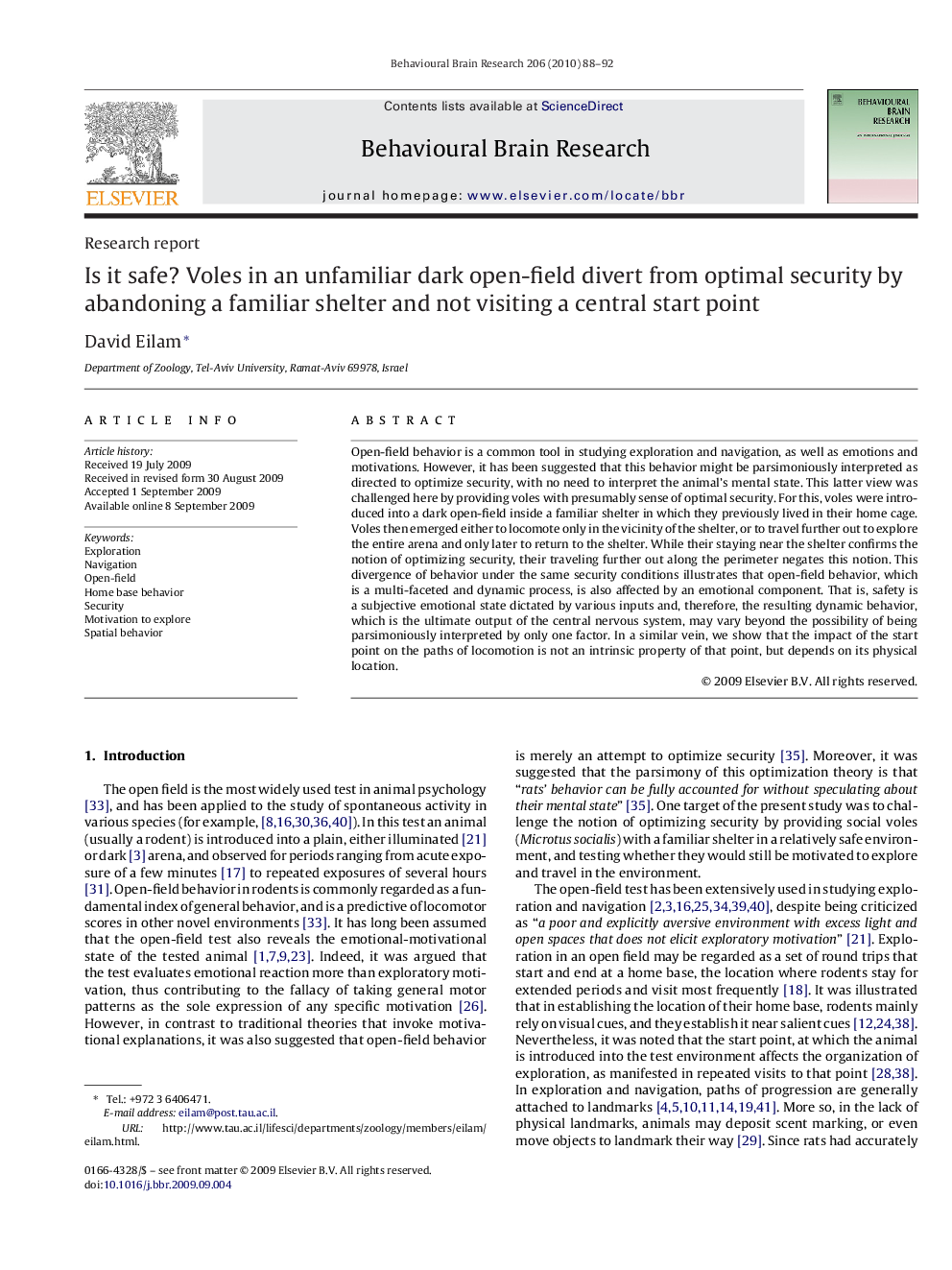| Article ID | Journal | Published Year | Pages | File Type |
|---|---|---|---|---|
| 4314581 | Behavioural Brain Research | 2010 | 5 Pages |
Open-field behavior is a common tool in studying exploration and navigation, as well as emotions and motivations. However, it has been suggested that this behavior might be parsimoniously interpreted as directed to optimize security, with no need to interpret the animal's mental state. This latter view was challenged here by providing voles with presumably sense of optimal security. For this, voles were introduced into a dark open-field inside a familiar shelter in which they previously lived in their home cage. Voles then emerged either to locomote only in the vicinity of the shelter, or to travel further out to explore the entire arena and only later to return to the shelter. While their staying near the shelter confirms the notion of optimizing security, their traveling further out along the perimeter negates this notion. This divergence of behavior under the same security conditions illustrates that open-field behavior, which is a multi-faceted and dynamic process, is also affected by an emotional component. That is, safety is a subjective emotional state dictated by various inputs and, therefore, the resulting dynamic behavior, which is the ultimate output of the central nervous system, may vary beyond the possibility of being parsimoniously interpreted by only one factor. In a similar vein, we show that the impact of the start point on the paths of locomotion is not an intrinsic property of that point, but depends on its physical location.
